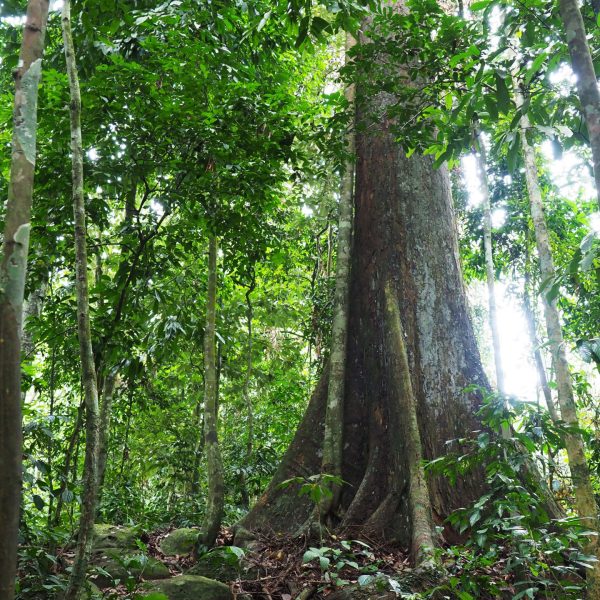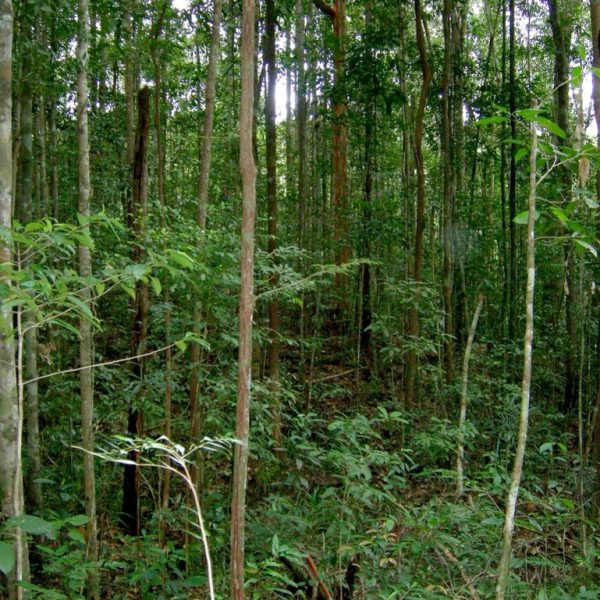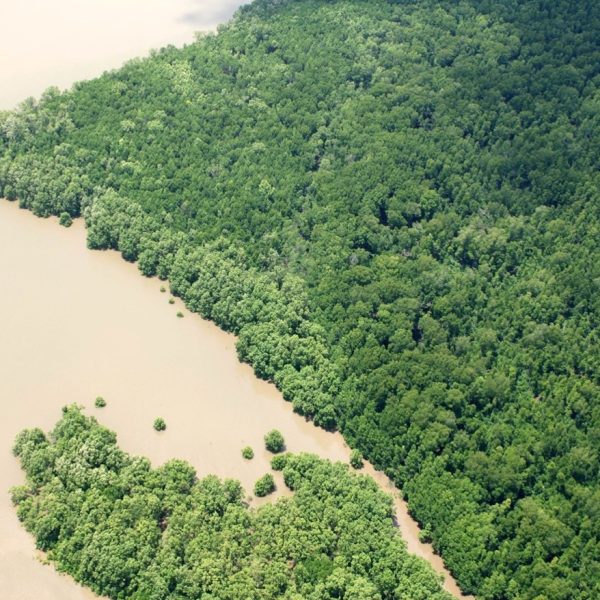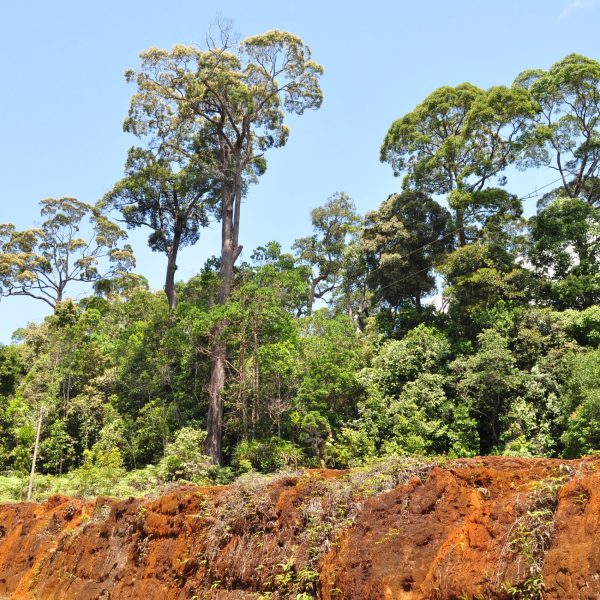Montane forests can be categorized into lower montane forest (1,000 – 1,500 masl) and upper montane forest (1,500 – 2,800 masl). However, the altitudinal ranges of montane forests are greatly influenced by geographical conditions. For example, vegetation of the upper montane ultramafic forest in Mount Silam (880 masl) bears a striking resemblance to that of the Mount Kinabalu montane forest at 2,133 – 3,048 masl. Montane forests are usually characterized with high tree density but small tree basal area. The dominance of tree family Dipterocarpaceae is disappearing as the altitude increases.


Dipterocarp forests are naturally dominated by trees of family Dipterocarpaceae. In Sabah, typical dipterocarp forests are lowland mixed dipterocarp (up to 600 masl) and upland mixed dipterocarp forests (600 – 1,000 masl). Vegetations in dipterocarp forests are often complex of which the four major canopy layers are distinctive. However, this forest may also occur in unique habitats including ultramafic, limestone and kerangas. This forest harbours many interesting Bornean trees, for instance Shorea faguetiana (Seraya Kuning Siput), the tallest tropical tree in the world. Old-growth dipterocarp forest can easily be found in Tabin Wildlife Reserve, Danum Valley Conservation Area, Imbak Canyon Conservation Area, Maliau Basin Conservation Area, Tawau Hills Park, and Crocker Range Park.
The term kerangas is an Iban word that refers to infertile soils in which rice cannot grow. This forest occurred on site with predominantly podzolized, highly acidic and sandy soils. In general, its dense vegetation comprises trees with small diameter and uniform height. Tropical pitcher plants (Nepenthes) are well adapted to this low-nutrient habitat. Kerangas forests have been recorded in many reserves including Sungai Serudong Forest Reserve and Segaliud Lokan Forest Reserve.


Mangrove forests are also known as tidal forests. They exist as an interface between the land and sea, where plants have evolved special adaptive features to survive in such environment. The mangroves of Sabah can be divided into three broad mangrove zones, for examples seaward or riverine margin, main mangrove and back mangrove zones.
Ultramafic forests occurred on ultramafic rocks that can be found in few places in Sabah, including Kinabalu National Park, Mount Silam, and Tawai Forest Reserve. Plants found on ultramafics often have morphological adaptations to minimise water requirements and water loss in order to survive in water-limited environment. Such adaptations include a generally low stature, small-crowned growth-form and other characteristics such as glaucous leaves and sclerophyllous and microphyllous morphologies.

FOREST RESEARCH CENTRE
MILE 14, JALAN SEPILOK
P.O.BOX 1407 90715
SANDAKAN SABAH
MALAYSIA
Tel: +6089 531522
Fax: +6089 531068
caims.sabah@gmail.com
The information in this site is intended solely for personal use by a user who accepts full responsibility for its use. While we have taken every precaution to ensure that the content of this site is both current and accurate, errors can occur.
The maps contained in this site should not be used for navigation purposes. In all cases, you should consult Sabah Forestry Department for advice concerning specific matters before making any conclusions related to information obtained from this site.
© 2024 CAIMS Sabah.